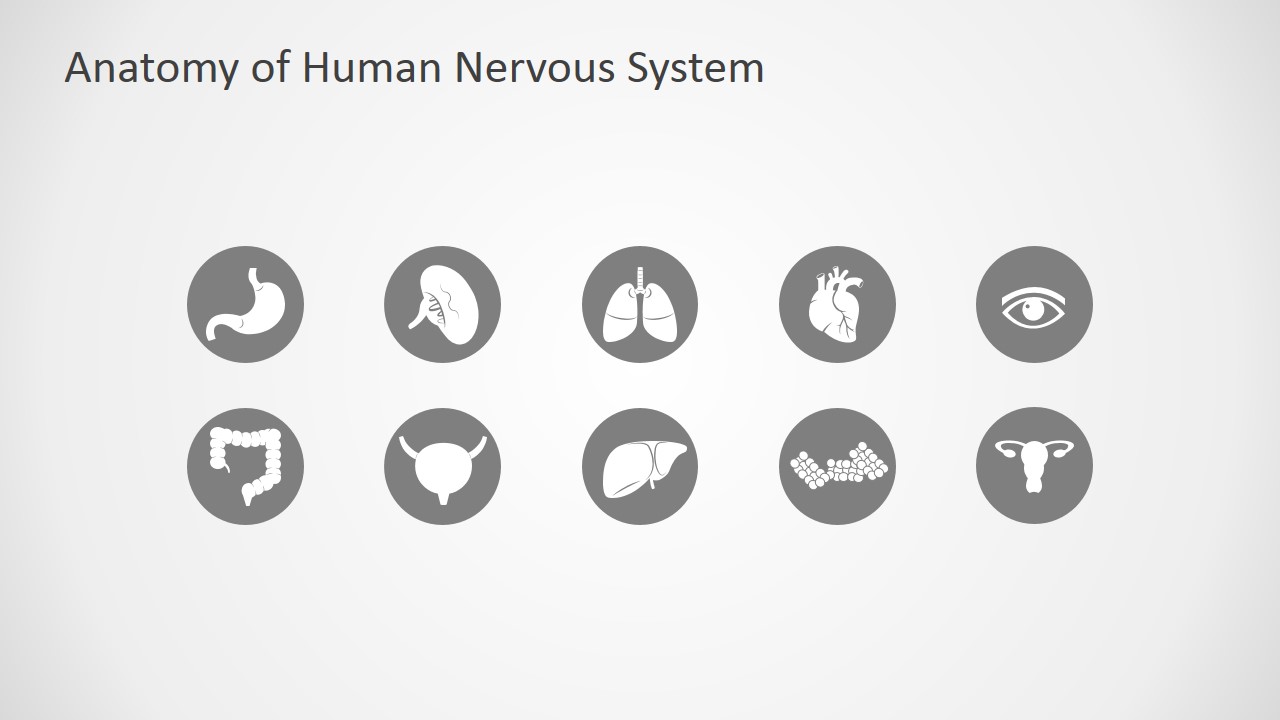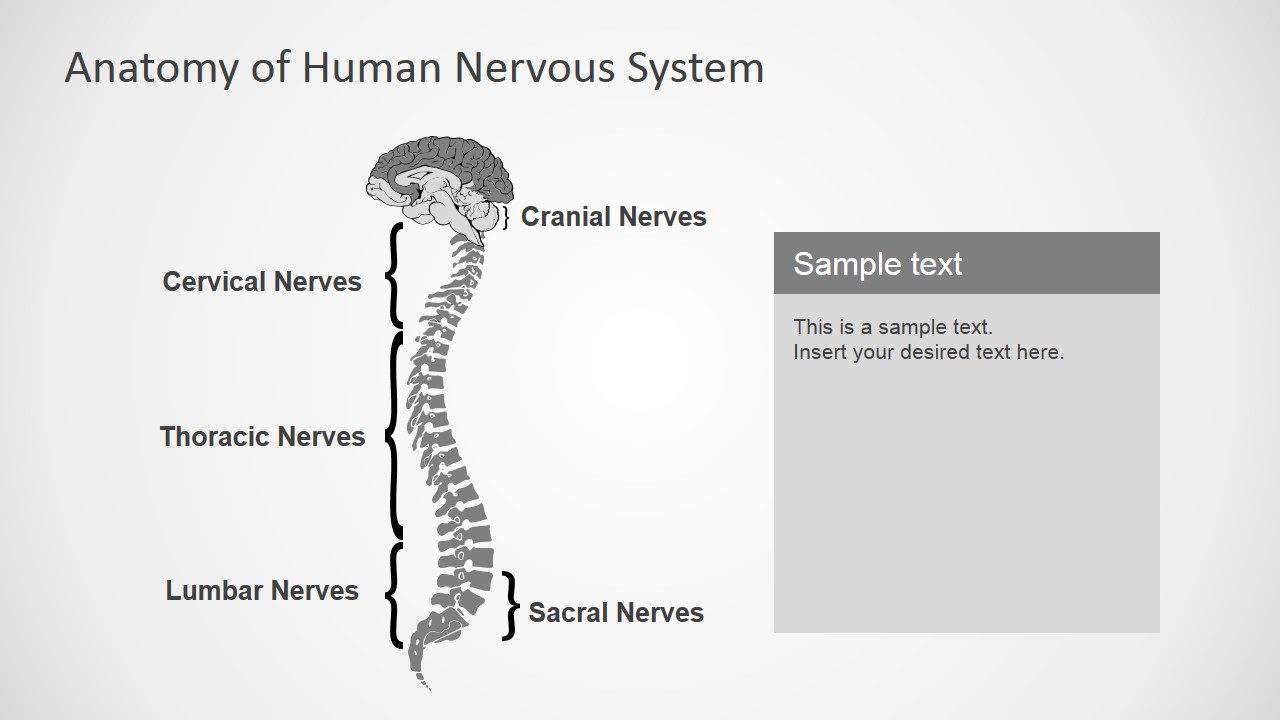Nervous System Ppt Download For Mac
Anatomy and physiology of central nervous system. 1.
Ppt On The Human Nervous System
ANATOMY AND PHYSIOLOGY OF CENTRAL NERVOUS SYSTEM Dr. Aparna jayara (p.g. 1st year). Organs CNS:. Brain.
Presentation on theme: 'The Central Nervous System Spinal Cord and Brain. In the brain. Amazingly complex, beats up the PC and the Mac combined!

Spinal Cord PNS:. Nerves. INTRODUCTION Brain is a closed structure Most of it is brain tissue while some of it is blood and CSF Brain comprises 80% Cerebral blood volume: 12% CSF contribute to 8% of the space inside the skull vault. Any increase in 1 component must be offset by equivalent decrease in other to prevent rise in ICT Monro – Kellie doctrine. Brain. It is one of the largest organs in the body, and coordinates most body activities.
It is the center for all thought, memory, judgment, and emotion. Each part of the brain is responsible for controlling different body functions, such as temperature regulation and breathing. Cerebrum. It is the largest section of the brain.
It is located in the upper portion of the brain and is the area that processes thoughts, judgment, memory, problem solving, and language. The outer layer of the cerebrum is the cerebral cortex, which is composed of folds of gray matter.
The cerebrum is subdivided into the left and right halves called cerebral hemispheres. Each hemisphere has 4 lobes. Lobes of Cerebrum.
Lobes of Cerebrum. 1.
Frontal lobe: Most anterior portion of the cerebrum, controls motor function, personality, and speech. 2. Parietal lobe: The most superior portion of the cerebrum, receives and interprets nerve impulses from sensory receptors and interprets language. Occipital lobe: The most posterior portion of the cerebrum, controls vision. Temporal lobe: The left and right lateral portion of the cerebrum, controls hearing and. Cerebellum.
Second largest portion of the brain. Located beneath the posterior part of the cerebrum. Aids in coordinating voluntary body movements and maintaining balance and equilibrium. Refines the muscular movement that is initiated in the cerebrum. Brain Stem. Midbrain—acts as a pathway for impulses to be conducted between the brain and the spinal cord. Pons — means bridge—connects the cerebellum to the rest of the brain.
Medulla oblongata—most inferior positioned portion of the brain; it connects the brain to the spinal cord.
The Central Nervous System Spinal Cord and Brain The Spinal Cord Carries sensory nerve messages from receptors to the brain. Relays motor nerve messages from the brain to muscles, organs and glands. Comes out of the skull through an opening called the foramen magnum. It continues down through the backbone. Two types of Nerve Tissue 1)White matter Composed of myelinated nerve fibres from the sensory and motor neurons. Grey Matter Consists of non- myelinated interneurons Remember these interpret sensory information and connect neurons to outgoing motor neurons Getting the information in and out of the spinal cord.
Sensory nerves enter the spinal through the dorsal root ganglion Motor nerves leave through the ventral root ganglion The Brain Weighs about 1400g (3lbs) Contains more than 100 billion neurons. Each neuron may have from 1000 to 10,000 synaptic connections with other nerve cells.
Some quick math. All of those connections result in as many as 100 trillion synapses in the brain. Amazingly complex, beats up the PC and the Mac combined! More than a thinker and decision maker The brain is the body’s main key to homeostasis, regulations of body processes from cellular respiration to the functioning of organs and systems. The nerves and receptors receive the information but the experience of the senses occurs in the brain. Continues to work at night.
Brain structure The human brain is mostly water (about 75%) Gelatin consistency suspended in cerebrospinal fluid. If not for all of this support the brain would sag! Glial Cells Glial cells make up 90 percent of the brain's cells. Glial cells are nerve cells that don't carry nerve impulses. The various glial (meaning 'glue') cells perform many important functions, including: digestion of parts of dead neurons, manufacturing myelin for neurons, providing physical and nutritional support for neurons, and more. Schwann cells What kind of Brain do you have? Many people have a tendancy to have Left Brain thinking or Right Brain thinking Some people, may find it hard to tell as the neurons seem to act and react equally.

Sort of True Some information on the right is not found on the left and vice versa. Need a connection – corpus callosum Bundle of nerves allowing communication between hemispheres. Four major divisions of the brain 1)Brainstem Contains: Midbrain Pons Medulla oblongata 2) Cerebellum Second largest division Found at the base of the skull 3)Diencephalon Contains: Thalamus Hypothalamus Epithalamus Ventral thalamus 4) Cerebrum 85% of brain tissue – largest division. Lobes of the Cerebrum Frontal lobe – control of voluntary muscles Linked to intellect and personality Temporal lobe – Sensory – vision, hearing Linked to memory and sensory interp of info Parietal lobe – Sensory – touch and temp. Linked to emotions and interpreting speech Occipital lobe – Sensory – vision Interpret visual information Mode of thinking – The Left Orderly - planned Rational Analytical – step by step Abstract Linear Cause and effect Reliance of language Prefers certainty Notices differences The Right Intuitive Putting together pieces to form a whole Concrete Subjective Holistic Reliance on Image High tolerance for ambiguity Spontaneous Notices similarities Oh I see.
Nervous System Basics Ppt
Activity on p. 453 Go through Part II-IV Read eye and hearing for tomorrow – it will be brief – then on to Feedback Mechanisms!